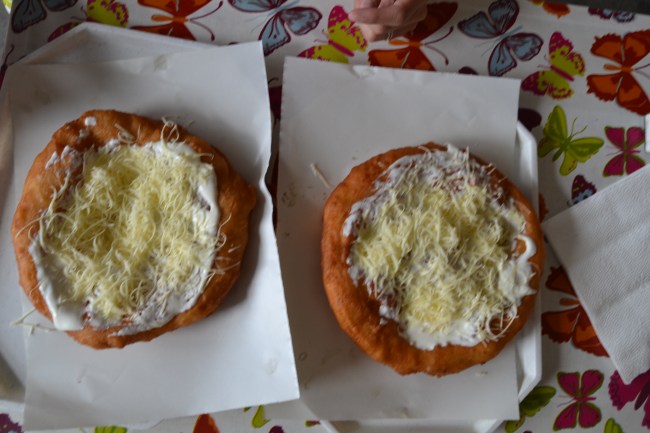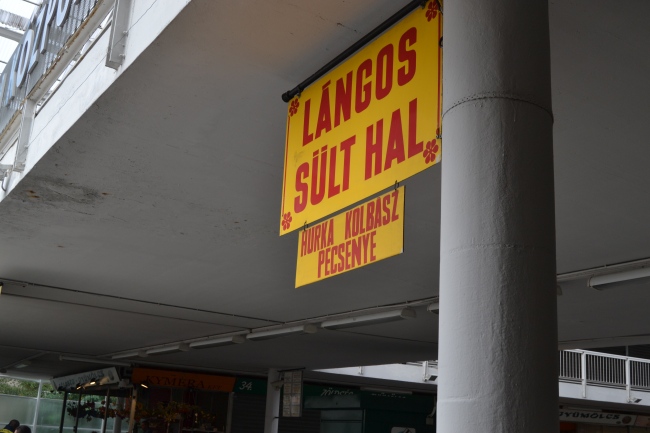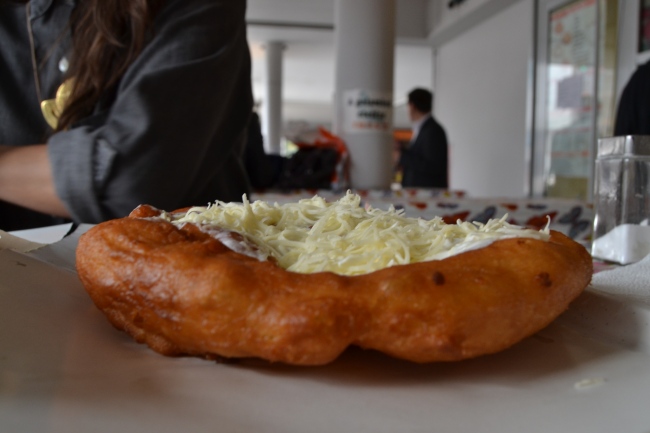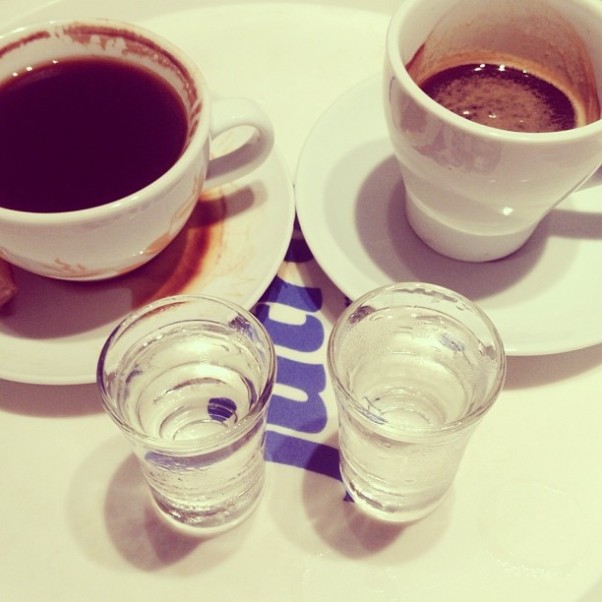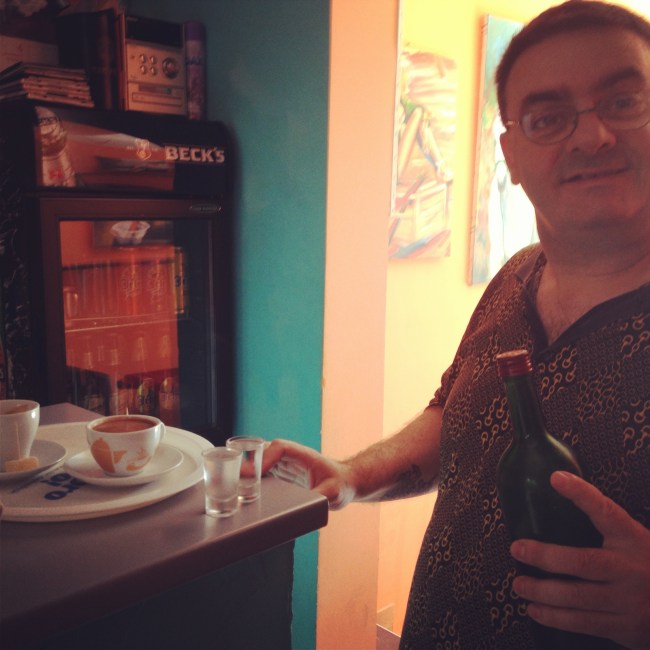Lángos: Deep-Fried Death Trap
Lángos.
The culinary equivalent of it sounded like a good idea at the time.
During our month long stay in Budapest, we ate this dangerous/amazing street food five times. Each time we did, the experience became both progressively better and worse.
There are Serbian, Czech, Polish, and other variations on Lángos but Hungarians are the progenitors of this amazing heart attack food.
Lángos is deep-fried bread essentially, with a yeasty dough that sometimes includes potatoes and sour cream which makes it almost like a mutant latke. The dough (roughly the size of a small pizza) is dropped into a vat of oil, and slathered with garlic sauce, sour cream, and mounds of cheese.
The way people talk about Lángos in Budapest is similar to the way New Yorkers talk about pizza, which is initially what attracted me to it–that and the carnal grossness of the food itself. For such a simple set of ingredients there was an amazing amount of variation among the Lángos that we tried.
In search of the perfect specimen, I found three major categories:
-The Death Cracker: with less yeast and no potato, this version was crunchy and oily. We found these at a couple of markets, none of which were recommended to us.
-The Nuclear Lattke: These contained mostly shredded potato, but were topped and prepared just as traditional Lángos is. Not the original, but satisfying nonetheless. This popular variation is sometimes called “Potato Lángos” or krumplis lángos
-The Last Supper: There are some Lángos that are softer..the dough is thicker, almost like a pizza crust. We found our favorite through our friend Kalman, who swore it to be the best, at the market on the Buda side of the city called Feny Utca Market.
I now believe that in the manner in which cats are said to have nine lives, humans are given around five Lángos before the body revolts. Once the quota is surpassed, the territory is treacherous. So choose your Lángos wisely, and the experience will be unforgettable.
